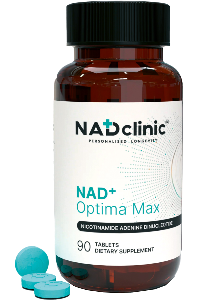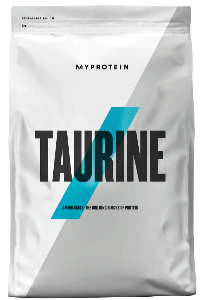The quest to live to 140
The landscape of longevity is expanding, as many treatments show promise not only in helping to prevent disease, but also in potentially lengthening lifespan – and improving healthspan. Some predictions suggest we have the potential to live to 140. Here are seven hot topics firing the discussions.
NAD+

Harvard professor of genetics David Sinclair, author of Lifespan: Why We Age – And Why We Don’t Have To, is pioneering research around nicotinamide adenine dinucleotide, or NAD+. It is a chemical compound derived from niacin (or vitamin B3), found in green vegetables such as asparagus and peas. “Everybody should love it,” says Sinclair. “Without NAD+ we are all dead in 30 seconds. It’s the molecule of life, carrying out hundreds of chemical reactions, and is required for the body to defend itself against ageing. But over time, levels decline.” Sinclair takes 1g of the oral supplement NMN every day, which is a precursor building block of NAD+. Functional medicine practitioner Dr Mark Hyman is similarly evangelical: “It may be as close to the fountain of youth as we can get.”
Ozone therapy
Ozone therapy sees ozone gas (O3) administered to cause reactions that form more proteins and red blood cells, which in turn increase oxygen supply. It has been used in the treatment of autoimmune diseases, infections and viruses, as it treats bacterial infections and kills parasites. Other benefits include improved circulation, lower inflammation, potentially higher energy levels and sharpened brain function.
“Proponents of ozone therapy claim that it can cleanse the blood through several mechanisms,” says Dr Tamsin Lewis, of longevity clinic Wellgevity. These include “oxygenation, immune system stimulation and anti-microbial effects.” But she emphasises that the evidence is limited: “The efficacy of ozone therapy is still being studied, and it is not without potential risks and side effects. It is not a mainstream medical treatment, and its use should be discussed thoroughly with a qualified healthcare provider.” Gas can be ingested in the form of ozoneated water, injected or applied topically. Biohacker Dave Asprey has taken it rectally: “You insert a catheter and send about a litre of ozone gas into your colon… The ozone goes straight to the liver, which,” he believes, “makes it good for enhancing detox and liver function.”
Stem-cell harvesting
There is evidence that transplanting stem cells into the body could have an impact on skin regeneration and wound healing. Components present in stem cells include exosomes, which contain proteins, and as Simone Gibertoni, CEO of Clinique La Prairie, explains: “They [exosomes] perform signalling tasks between cells and can regulate the fate and morphology of recipient cells by driving different signalling pathways – thereby exerting their regenerative effects in many tissues. Science is at an early stage on this, but it is promising.”
Harvest your own stem cells, process them and reinject them back into your body, and have you found the fountain of youth? Clinique La Prairie is backing the theory, and is now offering a service to harvest your stem cells and keep them for up to 30 years. After athlete, exercise physiologist and biohacker Ben Greenfield had a “full-body” autologous stem-cell (ie, his own cells) “makeover” at the Docere Clinics, injecting his spine and all his peripheral joints, he reported himself “supercharged. I feel wonderful.” The FDA, however, cautions against treatments that are not officially approved.
Peptide injections
Peptides are chains of amino acids – the building blocks of proteins – that modulate many aspects of our biology, including our mitochondria, the energy centres in our cells. The human body makes around 7,000 types of peptides that support different functions from immunity to gut repair, skin health and libido. But as we age, they deplete. There are more than 80 different synthetic and natural peptides on the market, which are injected (or applied topically) to encourage these specific functions. One example is semaglutide – branded as Ozempic or Wegovy – which is a synthetic replica of the naturally occurring GLP-1 peptide, and is used for weight loss. (Others have not been approved and may only be purchased under the terminology “research peptides” and “not for human consumption”.) Physician and author Dr Mark Hyman has “used them extensively” and believes “they have strengthened my immune function, helped my recovery from Covid-19, improved sleep, sexual function and libido, and helped me heal from injuries”.
Plasmapheresis
Plasmapheresis involves plasma exchange. The technique, pioneered to address autoimmunity, “cleans” the blood by drawing it out of the arm and passing it through a centrifugal filter to remove plasma containing ageing and inflammatory molecules and proteins. The plasma is replaced with fluids containing albumin (a protein found in plasma), before being transferred back into your body. This “fresh albumin” is donated blood from younger people, such as university students. Tech entrepreneur Bryan Johnson, 45, recently made headlines with news that he injects himself with plasma from his teenage son, Talmage, though he has since declared that he has stopped, citing no benefits. In mice, studies showed “reverse” ageing – in other words, lowering the biomarkers that measure your body’s age. Rejuvenation benefits were also found in mice by diluting blood plasma with saline solution. The Young Blood Institute is running trials to explore its potential.
Taurine

Naturally-occurring amino acid taurine is found in meat and fish – and is already a common ingredient in energy drinks and baby milk – but our levels deplete with age. A recent study published in Science showed that mice, worms and monkeys lived longer or healthier lives when fed large amounts of taurine (however, if you applied this to humans, we would need 3g to 6g a day to mimic the dosage – most dosages are 500mg or 1,000mg). Separate health benefits include increased muscle endurance and strength. “It appears that taurine acts as a guardian for cells, promoting their survival,” says Herminia Pasantes, a biologist at the National Autonomous University of Mexico in Mexico City.
Rapamycin
Also known as sirolimus or marketed under the brand names Rapamune and Fyarro, Rapamycin is currently strictly controlled as a cancer treatment and for those who have had organ transplants. “Rapamycin is mostly prescribed for cancer patients as it modifies the immune system in positive ways,” says Dr Lewis. But the natural antifungal antibiotic also has the potential, she believes, to be “the most exciting anti-ageing drug” as it “holds great promise in combating inflammaging [age-related chronic inflammation]”. However, she adds that in large doses “side effects are not uncommon”. These include infections, pneumonia and cancer. “A prescribed medication, it requires careful consideration of individual circumstances and monitoring,” says Dr Lewis. “Prescription in the regenerative medicine world is considered ‘off licence’ and therefore most doctors will not prescribe it until more robust data on efficacy is available.

FT Weekend Festival returns on Saturday 2 September at Kenwood House Gardens, London. Book your tickets to enjoy a day of debates, tastings, Q&As and more... Speakers include Julian Barnes, Margot Henderson, Henry Holland, Ravinder Bhogal and many others, plus all your favourite FT writers and editors. Register now at ft.com/festival.
This story originally appeared on: Financial Times - Author:Tiffanie Darke

























